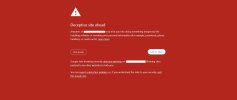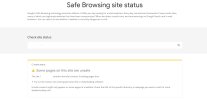- Server operating system version
- AlmaLinux 9.2 (Turquoise Kodkod)
- Plesk version and microupdate number
- Plesk Obsidian Version 18.0.56, last updated on Oct 13, 2023 01:25 AM
Hi,
Couple of days ago there was an email spoofing accident where someone sent some sort of threatening email that was sent to [email protected] to [email protected], [email protected] to [email protected] and then to a Gmail address.
Any assistance would be greatly appreciated.
Couple of days ago there was an email spoofing accident where someone sent some sort of threatening email that was sent to [email protected] to [email protected], [email protected] to [email protected] and then to a Gmail address.
Firewall is enabled, fail2ban, SPF checking mode is set to fail. I tested the emails with mxtoolbox, the records are fine, there no certificate mismatches. The Safe Browsing site status from Google, checks mail, webmail, plesk.domain1.com as fine, however just domain1.com(which is no host domain) -> Some pages on this site are unsafe. The site domain1.com contains harmful content, including pages.... The deceptive site ahead prompts when I try to access into an individual email account settings, or email config check.Part of the email:
Sadly, there are some bad news that you are about to hear.
About few months ago I have gained a full access to all devices used by
you for internet browsing.
Shortly after, I started recording all internet activities done by you.
Below is the sequence of events of how that happened:
Earlier I purchased from hackers a unique access to diversified email
accounts (at the moment, it is really easy to do using internet).
As you can see, I managed to log in to your email account without
breaking a sweat: ([email protected])..... blah blah
Any assistance would be greatly appreciated.


